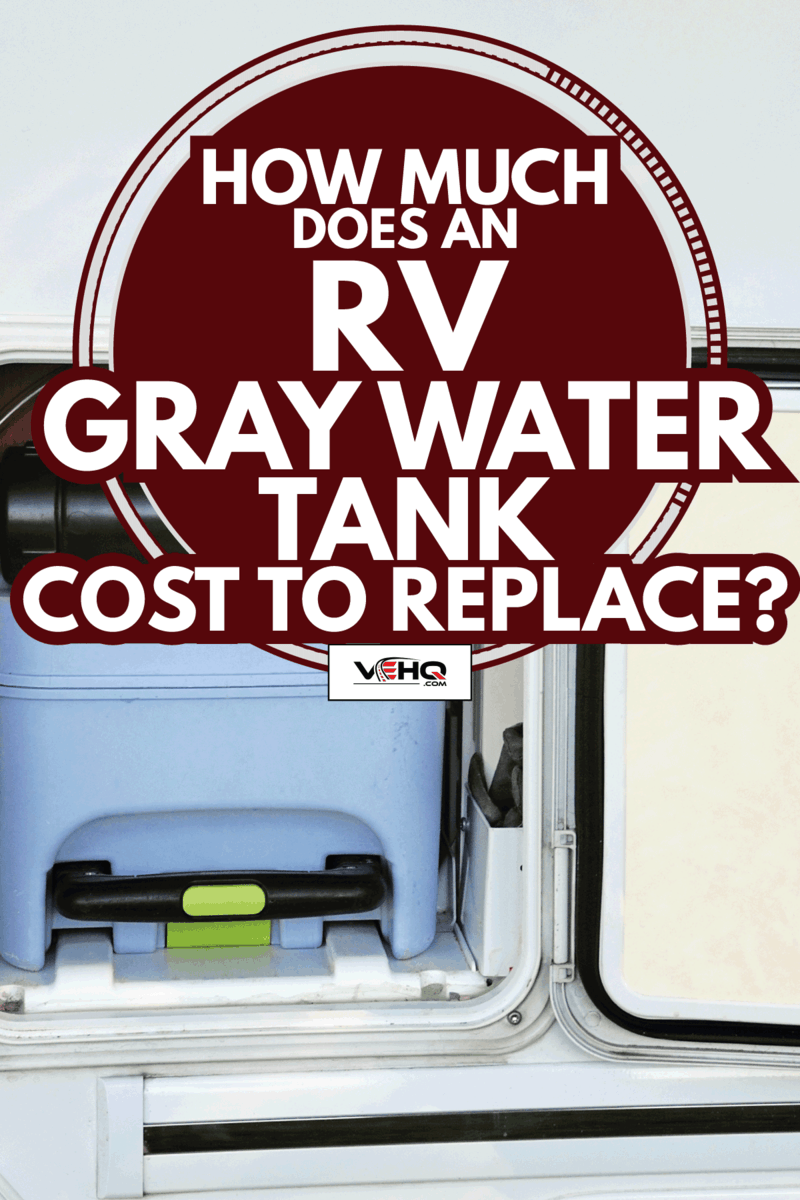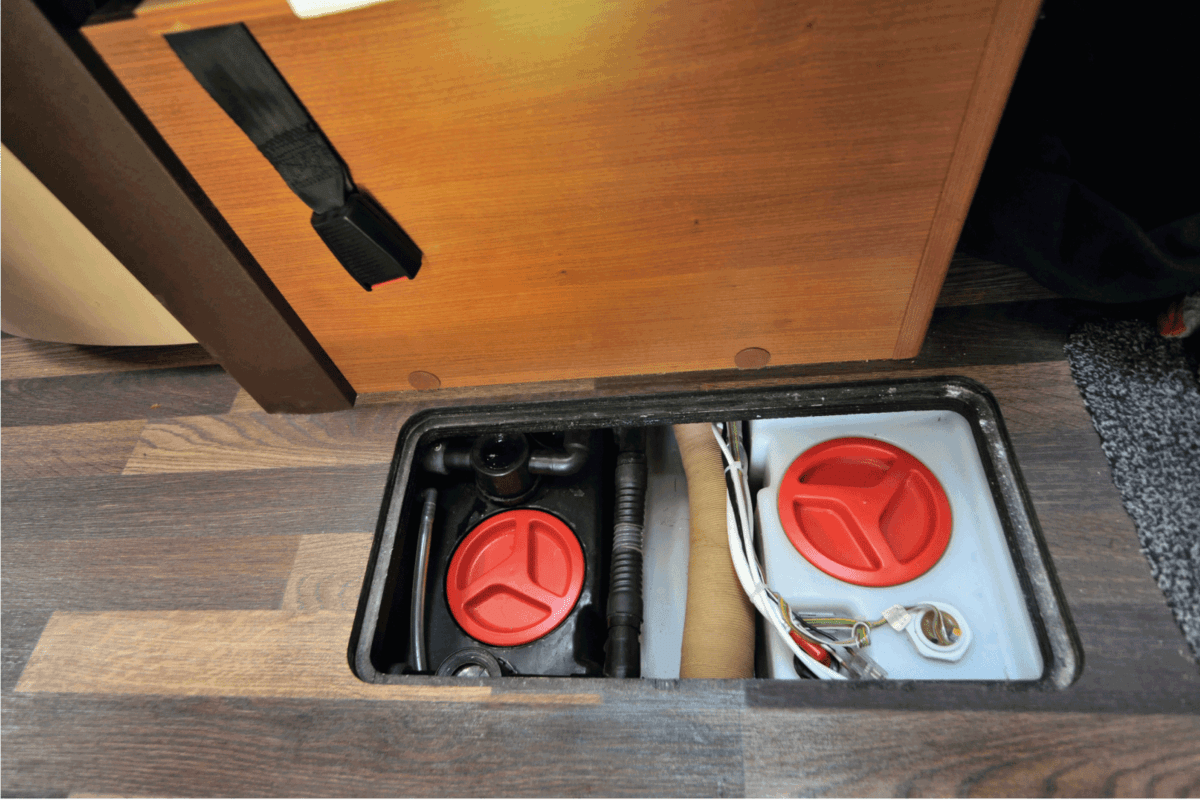Whether you're new to RV-ing or an old pro, replacing the gray water tank may be a repair that's never come up before. RV fixes can be expensive, especially if you need to pay a dealership technician for the labor. While routine repairs are just part of RV life, the gray water tank is typically durable and can last for decades, making it something even long-time RV owners haven't shelled out for. So how much does an RV gray water tank cost to replace?
Replacing an RV gray water tank can cost anything from about $100 for a small tank and DIY installation to over $1000 for larger or unusually shaped tanks and a professional installation.
Paying an RV technician can cost anywhere from around $200 to nearly $1000, depending on how difficult the tank is to plumb. Also, be sure the tank is dumped and cleaned first - the service center charges extra if they have to do those jobs, too. The cost of the tank varies by size:
- Small tanks of 15 gallons or less - under $100
- Medium tanks of 20-40 gallons - $100-$300
- Large tanks (or unusual sizes/plumbing) - as much as $600
Read further to learn more. This article covers where you can buy a new tank, what size is best for you, and how to install it. We'll also cover whether fixing or patching your tank might be an option. Finally, can you get rid of the tank altogether - does your RV have to have a gray water tank? Keep reading to find out.

Where To Buy A Gray Water Tank For Your RV?
Buying a new gray water tank will, obviously, depend mostly on what size tank you need. A bigger tank means less frequent dumping. Of course, you have to keep in mind the space available and determine what will fit.
And if you don't use a lot of water, there's such a thing as too big of a tank. It's best to wait to dump until the tank is close to full - a full tank has the power of gravity to really flush everything out. You don't want to take weeks building up a full tank, or it might start to smell. Pick a size that you won't need to dump every day but will be able to fill and dump in less than a week. You can read more about finding the right tank size here.
Places like Camping World carry gray water tanks. Walmart also offers tanks online, with prices currently ranging from less than $100-$400. RV dealers and other camping stores are also places to check - and if you're a member of Good Sam's extended service plan, they can cover the cost of repairs at a service center.
Or, of course, you can look on Amazon. Here are some of the best recommendations off of Amazon.
RecPro RV Tank
RecPro makes durable polyethylene tanks that are rust and corrosion-resistant. They are seamless, which lowers the risk of leaks, and the walls are 1/8-inch thick. This is a 40-gallon tank, also available as 9, 16, 21, or 100-gallon.
Click here to see this 40-gallon tank on Amazon.
A.A. Gray Water Tank
Like the other tank, this is a seamless polyethylene. This one requires venting but is also a little more affordable. This is the 30-gallon tank, also available as 10, 16, 21, and 42-gallon tanks.
Click here to see this 30-gallon tank on Amazon.
Class A Customs
Made from medium-density polyethylene, this one is affordable and stain-resistant. It's basic but gets the job done.
Click here to see this 20-gallon tank on Amazon.
How To Replace An RV Gray Water Tank
Begin, of course, with an empty tank. Dump the old tank in an appropriate location. Gray water must be disposed of safely, for example, at a campground dump station. Learn more about dumping the gray water here.
Next, determine exactly what holds the tank in place. It may have a strap or crossbar supporting it. It should be fairly easy to tell, just by looking, what you need to do to get the tank out.
Disconnect any tank sensors by loosening the nuts. Remove the hose clamps and hose. Once the gray water tank is completely free, simply pull it out.
Install the new tank by following the model of the old one. Replace the hose and clamp, replace the sensors, strap it in or secure it, etc. Make sure you follow any instructions for venting, according to the tank manufacturer. Since every RV is a bit different, you really have to check out your tank to know exactly how it's installed.
If you have any doubts about the job, don't do it yourself. It's not very hard to break a brand new tank because you didn't secure it properly or even because you cracked it during installation. Installing the tank yourself is certainly within some people's skill set, but if you don't think it's yours, let a professional do it.
This is a blackwater tank installation, but the idea is similar. You can check out this video to get an idea of the process:
Should You Try And Fix A Leaking Gray Water Tank?
Fixing a leaking gray water tank is a tricky thing. It's possible, but you have to be realistic. Sometimes, in an attempt to save money, people take repairs too far and actually waste more time and money trying to pretend they have a solution.
A tank that is simply old and has become weak and brittle probably can't be saved. The plastic that the tank is made from has a natural life span. No amount of epoxy is going to stop it from dying a natural death.
But, sometimes, a minor crack can occur, as just a random event. In these cases, a fix might be manageable. Just be sure to check the tank over and determine what failed and why. If the tank will just be damaged again because of a recurring problem, you need to fix that first.
How To Fix A Leaking Tank
There are two standard methods for fixing a leaking gray water tank.
- Topical adhesives - these are epoxies that adhere and bond to the tank. Because of the material they make the tanks out of, these rarely work as a permanent fix. For the best success, sand or roughen the tank's surface first, but even then, they just typically don't last. It may be fine temporarily, but temperature changes and expansion/contraction will, sooner or later, cause the plug to fail.
- Thermal welding - this involves actually melting the plastic with heat, sealing it back together. This is the most successful method, but you need someone who really knows what they're doing for the best chance of success. Some service centers offer this. For small issues, you can find DIY kits. But because it's fairly labor-intensive, it may be cheaper to just replace the tank if it's a bigger crack.
Click here to see this thermal welding kit on Amazon.
Can You Live In A Camper That Doesn't Have A Gray Tank?
The gray water in your camper is essentially everything except the toilet water. It's the water from the sinks, showers, and other sources. It's dirty water - just not quite as germ-laden as the toilet water.
As you might imagine, that water still has to go somewhere. You can live in a camper that doesn't have a separate gray water tank. But the water has to be diverted into a tank that combines gray and black water instead.
Some campers come this way, with just one tank for all the wastewater. It's easier to plumb, but since the tank would need to be so large, it's less common. It's easier, typically, to have two smaller tanks than one giant one.
In Closing

RV gray water tanks last for a long time if you take good care of them. While it might not be a frequent repair, it can be a pricy one. A new tank costs, on average, $100-$300 dollars. It costs more for unusual shapes or extra-large sizes.
If you're capable of installing the tank yourself, you can save some money by avoiding a pricey service technician. However, if you're not sure that you have the skills for the job, just skip it. Tanks aren't cheap, and an inferior installation is likely to cause a brand new tank to die an early death. Just let a professional handle it - if you take care of the tank, you shouldn't have to do it again for another 20 years or so.




